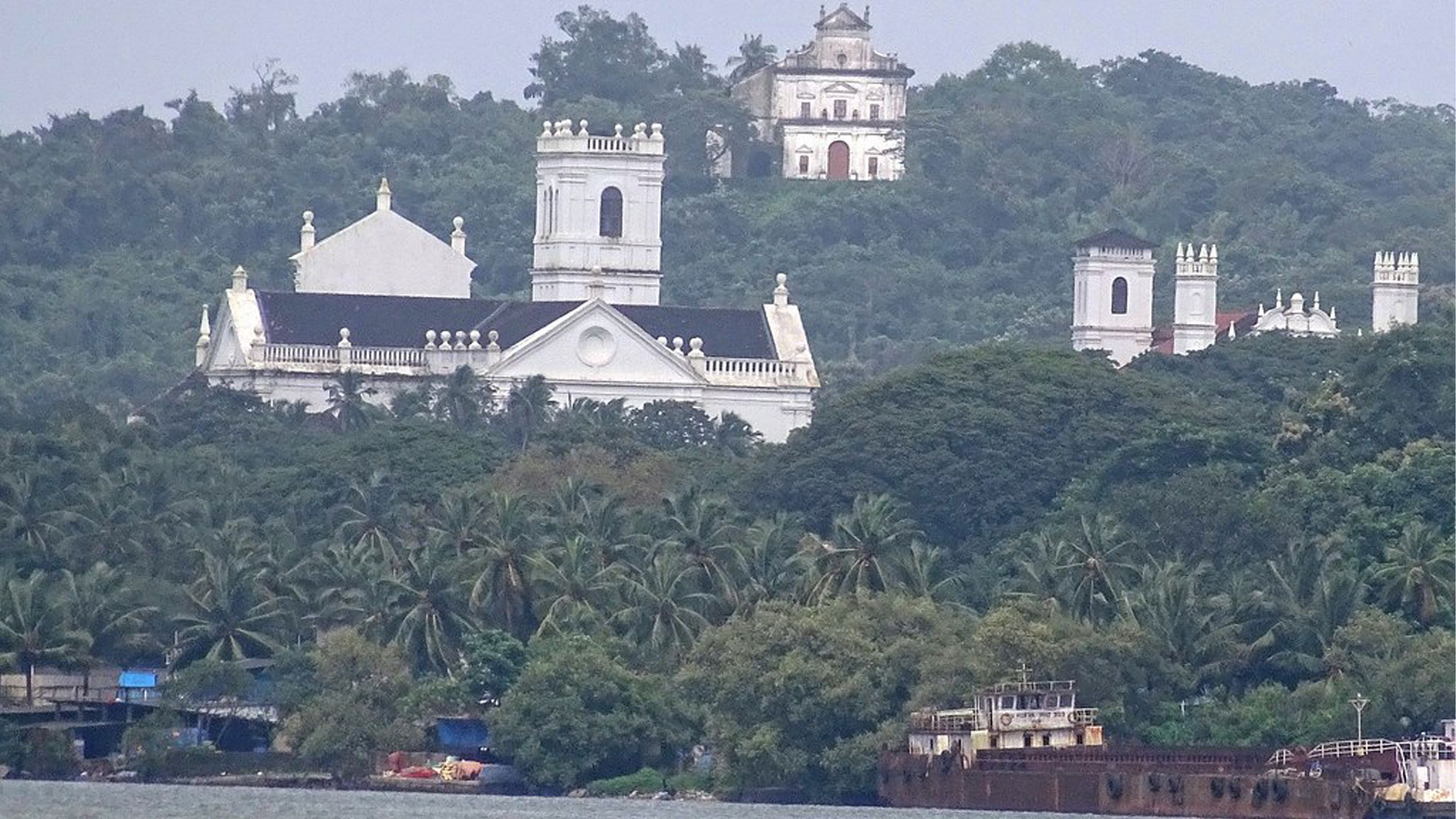Old Goa is Forever
A recent headline, ‘Construction at Old Goa heritage site raises eyebrows’ (Herald, 11.7.2021), points to unseemly changes stealthily taking place in the former world-city-turned-museum-city. Once upon a time a grand old lady, Old Goa is now a weak and defenceless widow. We continually sing her praises, yet have no qualms about inflicting the most horrific sufferings upon her. It is therefore never too much to conscientise our people and never too late to unmask the culprits.
The city of Goa rose and fell quite dramatically. It began as a fifteenth-century, Muslim creation. In 1510, the Portuguese conquered it at the behest of the Hindu population led by Timoja. A new city emerged and rose to great heights as the capital of the Portuguese Oriental Empire. A political power hub, commercial emporium, educational and cultural centre, religious powerhouse and ville d’élégance, Goa was widely regarded as ‘the Golden’.
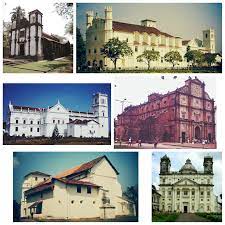
The golden period ended in the mid-seventeenth century, with the collapse of the Portuguese power. Manuel Godinho in his travelogue Relação do Novo Caminho (1663) states: ‘If it has not expired altogether it is because it has not found a tomb worthy of its former greatness.’ The urban space had become so unhealthy that the population decided to relocate to the suburbs; and the misery so deep made its massive scale unsustainable. By 1843, ‘Nova Goa’ (New Goa, now Panjim), a new capital, was born; a toy-town built with materials from its predecessor’s ruined or demolished edifices.
The metropolis of yore was a rendezvous of East and West, a hallowed place where Asian and European cultures merged, a pioneering precursor to globalisation. Quite remarkably, the demise of the city didn’t spell the demise of its spirit. The physical structures were abandoned – be it the churches, the Brahmapuri temple and the Muslim hat-khatro – but the city’s human spirit wafted across the Goan territory. In 1986, UNESCO declared Old Goa a world heritage site.
In fact, Old Goa can well be regarded as the mother of modern Goa: of Goans as a political entity and of Goanness as a way of life. Goa’s cultural uniqueness has its roots there; its language and literature, music and architecture, clothing and cuisine, laws and her very mind-set are by-products of its institutions, such as the municipal senate (1511), university (1543), high court (1544), printing press (1556), and others. Communal peace and harmony, which resulted from that decisive charter of 1526, has since thrived under the protective umbrella of the city’s Saint-in-residence, who is revered as Goencho Saib. All of that experience is part of the Goan DNA.
Old Goa is forever; she is our pride and deserves better. Meanwhile, it is distressing that the monsoons have caused ‘a massive flow from the deforested buffer zone of the heritage site and newly concretised Kadamba plateau’ (Times of India, 14.7.2021). Isn’t that yet another instance of ignorance, negligence, or malicious intent? Whatever the case may be, it doesn’t augur well for the Goan soil and soul. We rather owe it to ourselves to protect Old Goa; let’s forthwith desist from lip service and get down to saving the precious little that remains.
(First published in The Goan Review, Mumbai, July-Dec 2021)
Seminário Patriarcal de Rachol salva precioso património
O edifício do Seminário Patriarcal de Rachol da Arquidiocese de Goa, construído pelos jesuítas no século XVII, guarda um precioso património. Em algumas das suas robustas paredes encontram-se pinturas que retratam cenas bíblicas, a vida dos santos, e elementos da doutrina católica. São reproduções de quadros de artistas renascentistas: Rubens, Rafael, Miguel Ângelo e Caravaggio.
Outras pinturas dizem respeito aos Patriarcas da Arquidiocese e a fundadores de ordens religiosas. Vêem-se também obras de Ângelo da Fonseca, conhecido como o “Pai da Arte Cristã Indiana”.
Trata-se de mais de 150 pinturas executadas por artistas locais entre os séculos XVII e XX, em três formas: frescos, telas e óleo sobre madeira.
Por falta de recursos humanos e financeiros, essas pinturas foram deteriorando ao longo dos tempos. A partir do ano de 2017, graças à iniciativa do Reitor Dr. Padre Aleixo Menezes e à boa-vontade de Caterina Goodhart, directora da Escola de Conservação de Quadros e Molduras, de Londres, vários goeses e estrangeiros por ela treinados, ajudaram a restaurar as obras de arte, no âmbito do projecto intitulado “Restauradores sem fronteiras”, iniciado pela profissional londrina.
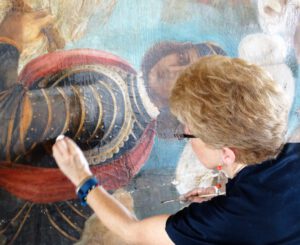
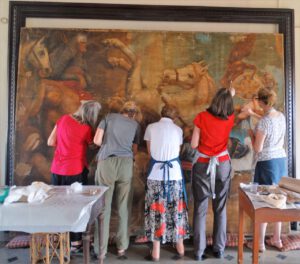
Até hoje estão restauradas as seguintes pinturas e imagens:
- Retratos dos Patriarcas Mateus de Oliveira Xavier, Teotónio Vieira de Castro, José da Costa Nunes e José de Vieira Alvernaz;
- Tela da autoria do general José Francisco de Assa, a qual retrata o Rei Dom Sebastião, que facultou a construção do Seminário;
- Uma outra, setecentista, representando a levitação de S. Francisco Xavier, no acto de administração da Sagrada Comunhão;
- Retratos de Maria Madalena, Santo António e o Menino Jesus, em estilo flamengo.

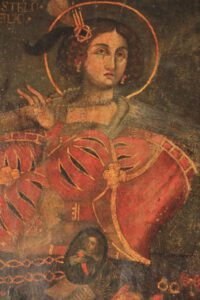
As obras do Seminário não só valem em si mas também por serem trabalhos de artistas locais. Reforçam a história e identidade artística do território, além de serem um óptimo meio de transmitir a Fé. Nas palavras do padre Victor Ferrão, professor do mesmo seminário, são elas uma “imagem do céu na Terra” e constituem uma “Bíblia visual” nas paredes.
(in Revista da Casa de Goa, Jan-Fev de 2021)
Why I grieve for Brazil
Who could remain unruffled in the face of the fires raging in the Amazon? My heart went out to Brazil as I watched that footage on television. I was equally distressed last year, when flames consumed that country’s oldest and most important historical and scientific museum.
A lot more connects me as a Goan to the vibrant South American nation, a cultural melting pot many times larger than my land.
The Goan connection
As a Goan, I grieve at the way things turned out for the Museu Nacional, Rio de Janeiro, on that fateful night of 2 September 2018. Founded in 1818, by king Dom João VI of Portugal, the museum housed precious collections of natural history and science built up over a couple of centuries. The edifice was earlier the home of the Portuguese royal family in exile (1808-1821), and thus had a close bond with Goa. Even after the Brazilian imperial family took over (1822-1889) Goa continued to enjoy relations with that country.
With the monarchy gone, the old royal museum moved into the palace. When I saw the blaze, I had a flashback of that king who had settled in his American colony following the Napoleonic invasions; of his young son, Dom Pedro IV (1798-1834), whose heart bled for Portugal; and, finally, of an eminent Goan, Bernardo Peres da Silva (1775-1844), who, as a friend of the latter, must have stepped into the palace several times to discuss the sad state of affairs in their tiny nation across the Atlantic.
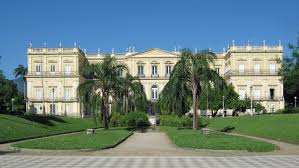
Peres da Silva belonged to the first batch of Goa’s deputies to the Portuguese Parliament. On his first two stints, he couldn’t take his seat for the Absolutists had dissolved the Cortes. In 1822, a circuitous trip via Mozambique and Rio de Janeiro, by force of circumstances, delayed his arrival in Lisbon. In 1827, he went on self-imposed exile to Plymouth (England) and sailed thence to Rio. He returned to Portugal only after Dom Pedro IV had reclaimed the crown from his younger brother Dom Miguel.
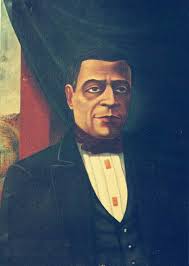
In Diálogo entre um doutor em philosophia e um portuguez da Índia (Rio de Janeiro: Tip. Nacional, 1832), the first-ever publication by a Goan in Brazil, Peres da Silva espoused the Liberal cause. He dedicated that political essay to the youth of Portuguese India. He was rewarded for his loyalty by being appointed Prefeito dos Estados da Índia. The response to his mixed bag of reforms in Goa was altogether another matter. A coup ousted the colony’s first and last native civil governor, who was indeed a unique gift from the Emperor of Brazil and Regent of Portugal, Dom Pedro IV, to Portuguese India.
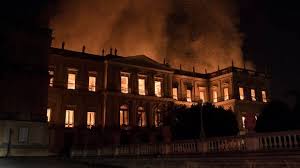 The human connection
The human connection
Well, a lot more connects me as a Goan to the vibrant South American nation, a cultural melting pot many times larger than my land. However, given that the house is presently on fire, I’d restrict myself to ecological parallels. For instance, the Western Ghats are to Goa what the Amazon is to Brazil: rainforests both, which together with their global counterparts fulfil forty per cent of the earth’s oxygen needs.
It is, then, as a human that I grieve for the inferno that set off in the Amazon on 23 August 2019. Representing over half of the planet's rainforests, it is the world’s largest and most bio-diverse tract of tropical jungle, with an estimated 390 billion individual trees divided into 16,000 species. The Amazon basin has an area of 7,000,000 km2, of which eighty per cent (5,500,000 km2) is wooded. Although its name is synonymous with Brazil, the Amazon does not belong to Brazil alone. It is perhaps less known that, while 58.4% of the rainforests are within the Brazilian borders, the rest is shared by eight countries: Peru (12.8%), Bolivia (7.7%), Colombia (7.1%), Venezuela (6.1%), Guyana (3.1%), Suriname (2.5%), French Guyana (1.4%), and Ecuador (1%).


Out of those nine, only French Guyana is not an independent state but an overseas department and region of France. Bordering Brazil to the east and Suriname to the west, it is the only territory of the mainland Americas fully integrated in a European country. Hence, the Amazon’s well-being is the duty of France too. But alas, wildfires apart, deforestation for farming is one of the most serious threats to the woodlands – and, what’s more, all nine jurisdictions are guilty of the crime.
When I grieve for Brazil – the world in miniature – I also grieve for the world as a whole.
If so, why is Brazil alone under the scanner? Its main accuser, France, is at fault, too – in fact in Europe and America. It didn’t do enough for the Notre-Dame, one of the greatest specimens of world cultural heritage: the cathedral lost its roof, spires and more. Yet, the haughty French are shouting it from the rooftops that Brazil lacks commitment to the Paris Agreement. Clearly, while wildfires keep ravaging every forested region of France, French lessons in fire-fighting are just out of place!
Without exonerating Brazil’s acts of commission or omission, sources affirm that media coverage of the Amazonian fires has been misleading. It’s also difficult to believe La France. By her distinctive subtilité, she is known to skew public opinion, as she did, notoriously, in the then war against Iraq. Two centuries ago, an imperialistic France caused the Portuguese monarch to flee to Brazil. And now they’re questioning Brazil’s sovereignty over the rainforests! For sure, no country should take the high moral ground when they’re hiding charred skeletons in their cupboards.
Invaluable heritage
So, when I grieve for Brazil – the world in miniature – I also grieve for the world as a whole. I grieve for the intentional or unintentional pillage, be it cultural or environmental, of our global village. I finally remind myself that “playing with fire” is more than an idiomatic phrase; it’s indeed a sharp pointer to the invaluable, irreplaceable character of our shared, global heritage.
